While foraging has again become a popular pursuit only in the last few years, it is, of course, the most ancient way that we have fed ourselves since we came down from the trees. If we are honest with ourselves modern foraging is nothing compared to what our ancestors used to do.
Their knowledge of the natural environment around them was awesome and it had to be because it and hunting was the only way that they could survive.
With the advent of agriculture, some ten or so thousand years ago foraging in many cultures died out although in others it continued all the way through to the 19th century in North America. In many ways, this is a shame as nature can provide us with so much food all on its own so long as we know what we are looking for.
Foraging also gives us the chance to reconnect with nature in a meaningful way. With that said, foraging should not be done without careful planning and education.
The average person today simply does not have the knowledge that our ancestors probably took for granted. So, in order to engage in foraging today you have to take the time to re-educate yourself about the natural world around you.
Related: 79 Edible Flowers in North America (with Pictures)
Below I am going to outline some of the most common first mistakes people make when they start out foraging and give a little advice on how to avoid them.
It is not an exaggeration to say that some of the advice below could save your life, so read carefully!
Try to avoid using common names for plants
This one is probably one of the hardest pieces of advice to follow. Learning, let alone pronouncing scientific names, can be a challenge. But trust me it is a good habit to get into.
You don’t have to forget the common names, of course, but learning the scientific names is important because common names change depending on who you talk to, and with foraging, you really need to know what you are picking before you put it in your mouth.
Learning the scientific names is also just a great way to learn a little bit more about the plants you are foraging for. Most plant books will list the scientific name, some common names, and give a short description on how to identify the plant, where it grows, and when it flowers.
Don’t eat too much of a plant the first time you pick it
While you may have spent time learning the scientific name of the plant you are foraging for and a little bit about where it grows and what its flower looks like, identifying plants can still be hard particularly because some plants actively mimic the looks of others.
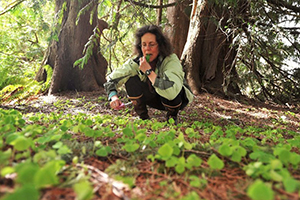
Even if you are pretty sure that you know what you are picking, if it is your first time foraging for a plant it is best to consume it carefully.
I usually take a little nibble first chew it carefully in my mouth for a minute or two even and let it dissolve there a bit.
If it tastes off or I get any adverse reaction, such as a tingling on my lips or any burning sensations, spit it out immediately and drown it out with a long drink of water. Believe you will make mistakes sometimes when you are foraging so it pays to be cautious.
Related: The Best Natural Treatments for Poison Ivy and Poison Oak Rash
If you don’t feel anything adverse go ahead and swallow. Then wait a few hours. If it is still all good, then more than likely you have found what you were looking for so enjoy!
Don’t think that close enough is good enough
Related to my above piece of advice, plants can look similar but have very different effects on your body.
If you are looking for a type of wild garlic, for example, it’s best to be disciplined about finding it, and only it, on a foraging outing.
Particularly if you are new to foraging, before you go out decide what you are looking for and stick to that. Grabbing a few other plants that look similar to what you wanted can be dangerous again because plants mimic each other but can have very different effects on your body!
Related: 8 Edible Backyard Plants And Their Poisonous Lookalikes
Don’t go out without doing research. Get a book!
Learning is fun! There are a ton of foraging guides out there full of interesting and practical knowledge about foraging and the plants you want to find.
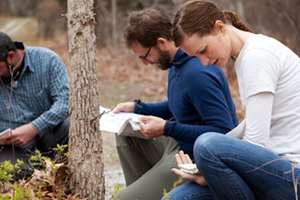
When you go out foraging, take the book with you as a reference. Especially if you are foraging for something new, trying to remember what it looks like, whether it has three-pointed leaves or four, for example, can be harder than you think! It’s nice to have your handy reference book right there with you.
If you don’t want to lug around the whole book at least jot down some notes on a piece of paper or if you are tech savy take a few pictures of the relevant pages with your phone.
Don’t pick everything!
This should almost go without saying. Don’t go foraging with the attitude of a farmer who has worked hard to plant everything that he or she is going to harvest.
Mother Nature is bountiful but be kind to her and don’t take everything that you can. Leave some for the animals, or other foragers, or just so the plant can easily reproduce itself.
As a rule for myself, I never take more than half of what I find. Not everyone needs to follow this rule.
There is certainly always a lot more out there than you can find on anyone foraging outing, but I find it works for me and ensures that come next season I know there will always be more waiting for me.
Really study your mushrooms!
Mushrooms are one of those plants that most new foragers always want to find. They are also one of the hardest edibles to get right. Why not start with something easy like wild garlic?
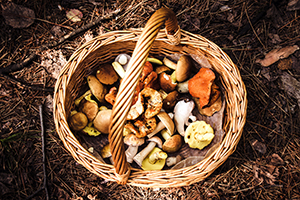
But if you really want to start with mushrooms, get a book, or even better yet, find someone in your area who already forages for mushrooms and go with them.
Mushrooms can kill you easily if you eat the wrong one.
And if they don’t kill you, they can make you see things you might not want to! Don’t get me wrong, I love picking some nice wild chanterelles as much as the next guy but do right or you can get into some real trouble.
Related: Edible and Non-edible Mushrooms you Find in Forests
Careful about foraging to close to urban areas
Finally, not all of us can live in the great wide open with a forest in our backyard. If you do, congratulations, easy foraging awaits you!
But if you are like many of us and live closer to urban or suburban areas, don’t worry foraging is still entirely possible!
Only you do have to be a little more careful about what you pick because urban environments can be subject to the pollution that will turn an otherwise perfectly edible plant into a health hazard.
Be careful, for example, of picking anything that is too close to a road. All manner of nasty stuff flies off of cars driving on them that can spoil plants nearby.
Final words
With that said don’t let my cautionary advice scare you away from going out and foraging for your food.
If done correctly, it is perfectly safe, a great way to get to know your natural environment, and also a great source of delicious food!
Happy hunting!
You may also like:
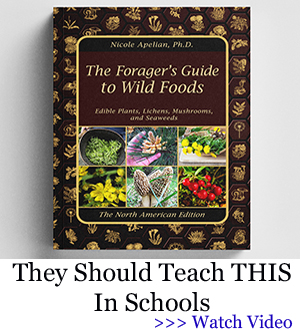 20 Stone Age Foods Every Prepper Should Try
20 Stone Age Foods Every Prepper Should Try
This Hidden Survival Garden Will Keep You Well Fed In The Next Crisis (Video)
A Forgotten Wild Edible: Pine Bark Flour

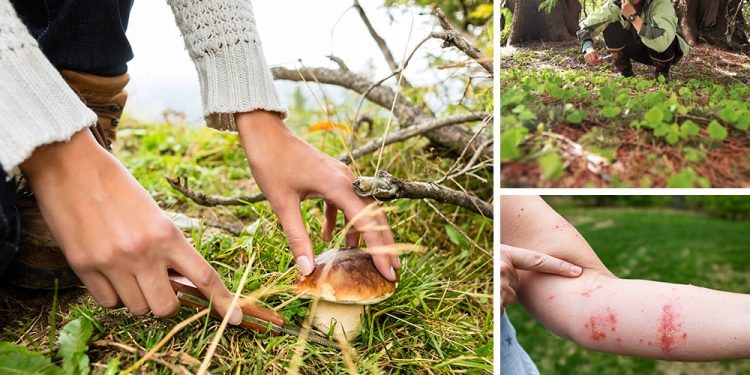













Fungi are mostly poison, but the species that are edible are high in protein and easily stored after drying. You need a low powered microscope 100X to see the shape and color of the spores. Never trust a mushroom by just looking at it’s shape, detail and color. One of the best ways of telling if a mushroom is edible is to see if insects are feeding on it. Insects will not eat poisonous fungi, what will kill a insect will definitely kill you. I have used the Audubon field guide for years. Best reference for the money and it is small.
This kind of stuff is what keeps people from foraging mushrooms–it is much safer and easier to get into as a beginner than people make it out to believe. Yes, to identify some advanced mushrooms you need a microscope. But with a good field guide and the internet, plus a very discerning and careful attitude, you can forage many mushrooms without advanced tools. I’ve eaten 10 types of wild mushrooms this month that I’ve identified with just these resources and I’m very careful. Look up lookalikes, stay away from any whose lookalikes could easily be confused/kill you UNLESS a spore print will definitively tell you which it is (spore prints are invaluable and easy to do), and if you’re feeling nervous, just stick to easy ones. You won’t misidentify a hericium, for example. Definitely be safe, but don’t feel like you need to consult an expert to start. Go buy David Arora’s book All the Rain Promises and More, get out there and start exploring! Even if you don’t eat any day one, you’ll learn some stuff and be able to identify mushroom families pretty quick. Oh, and a phone app for preliminary identifications, although often hit or miss, are a good place to start 🙂
I am truly awful at identifying wild plants. Combined with the fact that there’s hundreds of non-native species in my area leads to me absolutely not relying on foraging in my current area of residence. One of many reasons I am moving.
Wheh my internet went out last night, I lost my link to your survival sight that I paid for. I haven’t been able to retrieve it.
Laura
https://lostwayscommunity.com/
Miz Kitty, thank you. I got right on, where before it wouldn’t let me. niio!
I bought the book several years ago. Does that make me eligible for the site? I couldn’t log on with my common logins.
I didn’t know there was a forum. I tried to log in and wasn’t recognized. I am not seeing anywhere on that site where I can sign up
I always enjoy reading comments from several contributors here and would welcome the chance to interact with them more in a forum.
I don’t recall receiving an invitation to join the community when I got my book.
If anyone knows how I can sign up, please let me know.
Thanks
We went foraging this morning. While cutting mint, I disturbed a nest of some sort of stinging insect. I got stung five times on the left arm. They looked like baby wasps. They were much smaller than the wasps that got us last week. I got stung on the lip last week My husband got stung up the nose. Yes UP the nostril and he got two in chest. Today the stings did not hurt initially. They hurt later though. But… I brought home some mint.
Tee: Stung? There are very small bees that sting. A cousin who had a very serious problem with arthritis was foraging and yellowjackets swarmed her. She was stung multiple times and had to take a backing soda bath. I asked how her arthritis was acting. She got puzzled, then said, it’s gone!
I’m not bragging when I say I’ve never been stung. Blame God is you want, because that’s the only explanation I have. An ex in Mexico allows a swarm of bees to hive on the roof of her cave (Tarahumara, they’re all fresh air fanatics) but the dogs have to stay up on the mountain, which is where the goats are all summer, anyway. One night in early winter, the hive is taken down and processed. Bees then swarm to a lower level in the canyon so the goats and dogs can come home.
Bees do not like dogs or horses. Also, no floral anything before hanging out with them. Plain soap, no perfume or aftershave. niio
I love paper wasps, a couple years ago they built a nest on the back porch right over the back door. They were completely non-aggressive little critters so I let ’em stay until winter. Wife not happy. Come spring the new brood began to populate the nest. First thing they did was fly down like Alien and sting my face. Had to nuke the little devils.
Judge: I’m surprised something didn’t get into the next and wipe them out. Woodpeckers, squirrels, and so on all like the grubs. So do fish! One or two grubs in a fish trap will fill it with fish. niio
IIIini Warrior how did you manage to UPVOTE yourself so many times? Did you call Nasty Pelosi for advice in mail order voters or what?
BTW how do you get the Cheetos off your keyboard?
Dude or whatever weird sex you claim if you want respect ACT Respectfully.
Maybe even give something that sounds like good advice wouldn’t hurt. Your the rude critter everywhere I see your posts.
NOW you can say nasty things about me, whatever….
About Mushrooms, even the Experts find themselves from time to time visiting the ER over a mistaken “safe to eat” decision. Some die before they can get to EMS.
Aside from the thrill of risking your life over a few calories what’s the point?
Some wild crafted foods like fat hen are easy to ID and have no real nasty look alike. PLEASE stick with the safer ones folks.
Plant a chunk of a sprouting potato and even with out care your VERY Likely to get a full days worth of food. A little care 10 pounds of spuds can be yours. An EXCELLENT Stealth garden plant as almost Nobody knows what a Potato Plant LOOKS Like. I’ve planted them in HOA flowerbeds and they thought them beautiful, never knowing I was going to dig them up in the fall and eat them.
After things go sidewise are you REALLY going to risk sickness and death for a maybe “Safe” mushroom?
Michael: Grow your own. this woman does it in Tucson without making extra space. I avoid oyster mushrooms, tho, because they kill earthworms. niio
https://www.youtube.com/watch?v=3nFIQoomxvE
Potatoes are good, yams are better. Yams are hardier and grow faster. Look at what crops are used by subsistence farmers in an area with the same climate and terrain as yours. Subsistence farmers seem to use corn, sorghum, and yams in most of the world that isn’t tropical. In our area potatoes will rot in the ground if not harvested in early July, (It does get hot in Texas). Yams don’t have this problem. Even in Subsistence farming most of the crop is used to feed stock. Protein is a premium product. Chickens and goats require the least investment.
Yes, Daniel, Yams or sweet potatoes are better AND you can eat the leaves young in salads, or cooked as greens. I find you can harvest almost a third of their leaves with out affecting the sweet potato production. NOT Something you want to do with Nightshades like Potatoes, Pepper and Tomato’s.
You need to grow what grows well in your area. In my area of NH sweet potatoes I DO grow but they take starting in glass topped hothouses to warm the soil for them as well as frost protection as they take so long to mature properly. But they are tasty 🙂
Critters are again a local thing. It’s too hot out your way for easy rabbit production. We even have to provide shade and misters in OUR Hot spells but a buck and a pair of good Does keeps me in rabbit 365 days a year with some to trade. BTW Rabbit Starvation from lack of fat is actually a WILD Rabbit thing. Mine have ample fat to prevent that issue.
Goats as much as I Love to eat goat meat are a Demon to Gardens and Fruit trees-bushes. Nearly impossible to fence In or OUT. I’ve given serious thought about milking sheep.
Chickens are MY Hero’s, processing junk like bugs and weeds into wonderful eggs and roasters. They are ALSO the Best Bug Reduction system for a garden. Most Garden Pests LIVE in your Soil. They hatch in the spring to arise and eat your hard work. Chickens in there after you harvest AND before you plant LOVE those bugs and eggs as well as any plant scraps you didn’t get. Both reducing pests and plant diseases.
Nice overview Justin.
I would add two things that will be obvious to the old timers here, but maybe not to the newbies.
First, be aware that there are wild animals in the wild. In addition to Bambi and Thumper, you may also encounter poisonous snakes, bears, gators, ticks, mosquitos and other critters that can injure you. Watch where you walk, keep checking your surroundings and take precautions to protect yourself such as a good bug repellent and long pants with good quality boots.
Second, make sure you know where you are going and how to get back to your vehicle or base. Learn how to use a compass and how to mark (or blaze) your backtrail.
Third, take water and a snack even if you are only planning to be out a couple of hours. If you get lost or injured, you might be stuck out longer than you planned.
Four, Take your fully charged cell phone with you. Even if there’s no signal, it can act as a flashlight and GPS locator (if there’s just a weak signal). in an emergency.
Five, Let someone know (if possible) where you are going and how long you plan on staying out.
Six, Bring bags (old grocery bags are good). Old plastic food containers with lids are good for squishable items like berries, and Ziploc bags are good for small quantities of herbs and seeds.
Miz Kitty: You forgot Stinky. Bambi, who will kill at the drop of a hat, Thumper who will attack humans, and Stinky who can carry rabies and live for quite a while. Compared to those 3, World Destroyer (Mother of Cannibal Owl/the vampire god, female rattler with two heads) is easy. Of course, there might be teenagers out there, too. If you find tracks, just run in the other direction before they see you!
How goes it? Do you want some Tarahumara amaranth seeds? They can get 5 feet tall and bushy, but if you like spinach, you’ll like this. Ton of red flower clumps and tiny, tasty seeds, too. niio
Red:
Thanks for the offer, but I really don’t have the room.? Wish I did.
Would they do for micro greens, d’you think?
Yes, I think so. I’m going to see about sprouting them this winter, tho that’s prime time for cole crops like collards. If kept pinched, removing the growing tips, they get bushy and usually remain small. niio
Sitting on the back porch slow cooking a yard bird I parted out earlier today, it is on my Pilot Rock park grill which is the most awesome grill made, I can see around a half dozen edible/useful plants w/o putting down my drink and getting out of my chair. Eastern red cedar is useful for flavoring, the leaves contain thujone, a compound that is the main ingredient in Absinthe. Not much nutrition. There are native passion vines growing up in the Juniper, good relaxing tea from the flowers, they don’ t make much fruit but its good. There’s a cottonwood by the Cedars, inner bark and green shoots have a bit of nutritional value. Queen Anne’s lace out in the fields, gone to seed the seeds have some food value and the tough little main root can be cooked, not much to it. Some Tufa in a wet area, yellow nutsedge, excellent survival food, the little nut like tubers tasty and nutritious, also numerous which is most important. Red oak, live oak, pecan, but the nuts are two months from ripening. Lots of mesquite but they didn’t make seed pods this year. Lots of purslane, good garnish but too much gives me heartburn. Some mushrooms with the recent rain but death by mushroom is horrible. You get violently ill for 24 hours, vomiting and severe cramps, then you feel better as your liver filters out the mycotoxins until the mycotoxins begin to burn up your liver and you die a slow painful death.
I’d rate plant foraging as a pretty minor survival skill, depending on what’s in your area. Taking a guide and learning edible plants won’t gain you much, I highly encourage learning how to use a plant identification key and getting to know all the plants in your area, what place they hold in nature and what their importance is to animal life.
Just basted the chicken with Head Country bbq sauce, cooking over oak coals, get a char on that sauce and we are in business!
Blessing: Thank you Lord for grilled chicken and please save me from ever having to eat varmints and forage for roots and bugs, Amen!
Judge Holden:
Amen!
Judge, is it the purslane of the bottle? 🙂
If you want to try this, the lady lives in Tucson, and it works in her winter garden. https://www.youtube.com/watch?v=3nFIQoomxvE
Only thing, oyster mushrooms kill anything related to earthworms, which as a nematode. So are round worms, of course, and the duff from raising them (such as in a bucket) is good to eat. niio
One of the most common deadly mistakes a person can make is to think that poison hemlock is yarrow. Another is eating parts of a plant that are poisonous. For instance, much of the elderberry plant is poisonous. Also, it would do you well to get to know an experienced forager to help you pick out what is eatable and what isn’t.
The best way to avoid poison is to know the worst of the worst. Water hemlock, deadly nightshade and poke. Poisonous plants have their own distinctive smell, texture and appearance. Knowledge is power, use all your senses to identify the plant in question. Test a small amount of a plant in question by putting a single leaf or berry in your mouth, between your cheek and gum. Do not swallow. If you feel a burning or numbness in the area it is likely poisonous. Wash out your mouth afterwards. This isn’t the best test, but it is likely the only way to test a plant in a SHTF situation. Remember just because a plant is not poisonous does not mean that it is worth eating. Look for plants that have a high food value.
Cygnet: Very true. While Dad oved elderberry jelly, he would allow it on the farm because goats will browse it, and pigs root around it, and both die. Wild celery (hemlock) was another one that when it appeared, he would spray it. niio
My instructor from EatWeeds (UK) says, (1) Never start a test with the mouth. You need your mouth to communicate, drink water, etc. (2) Always start with the forearm and rub the plant there, then wait up to 4 hours for any symptom that may appear. If you get a rash, don’t eat. (3) Next, rub a bit of the plant on the outside visible part of a lip; wait four hours for any swelling or rash. If present, don’t eat. (4) Next, Claud’s advice–take a tiny piece and put on tongue, let sit for a minute or so, then spit out and wait 4 hours for any sign of a problem. (5) Next, consume (swallow) a tiny piece, wait 4 hours, if no problem, then eat (and not too much with the first “munching”) and wait. This approach requires people to experiment with frequent found plants in a region, on your first time out and first on your forearm (and taking more of the plant with you to continue steps above). This gives you a sample after you are home when you can do scrutinizing identification; and also gives you (so to speak) additional plant portions as you are hiking along to continue the testing.
The worst scenario would be to not do these steps and find yourself in a situation where you are already hungry-starving and out of food–that could affect your judgment and get you into a lot of trouble. Yes. Bring a Book; and then test safely; and avoiding weeds near roads and fences.
I’ve seen old westerns, where Indians captured a different tribe Indian and forced him or her to eat a strange plant. If the “victim” got severely sick or died, then the capturing tribe knew “what not to eat”. If the person lived in health, they would eat it too. After awhile, the captured Indian would often become a member of the capturing tribe.
radar: Much thanks for the information. It’s good advice.
Now, about these Indian…Hollywood is nazi lala land 🙂 Women are scared and even captive women were well-treated–for captives. The whole idea of taking captives was to strengthen the nation. If a woman or child were harmed, the man might just get the ax from his own mother. And, it has happened. Yeah, Hollywood, AKA sillywood, erk niio!
Yeah, I don’t think bad old Chief Scar was going to use Natalie Wood as a food tester.
LOL Natalie Wood? Wow, food would be the last thing on my mind 🙂 Darn shame we lost her. niio
Illini Warrior: Rudeness is a symptom of being a life long bed wetter. Isn’t that uncomfortable?
Justin missed one- respect property boundaries. My grandfather raised asparagus for a while and ended up getting rid of it. People would jump the fence to pick it. Even when he quit growing it, it was indigenous along the fences and people would still jump the fence to go across the field or along the irrigation ditch to pick it. Ya know something? We eat it to! If ya cannot respect the fences and know where the unmarked property boundaries are, count on trouble. Yer better off getting permission, because there are people out there that just might not forgive ya.
I’m in luck, I guess. Everyone here seems to think the asparagus is a fern ’cause it’s in a flowerbed 🙂 It dies back for the summer and wild sunflowers take over. niio
Even someone with a good amount of foragjng experience should keep training. Try to find a mentor who is more experienced than you. Read, and always be 100% sure of what you are putting in your body.